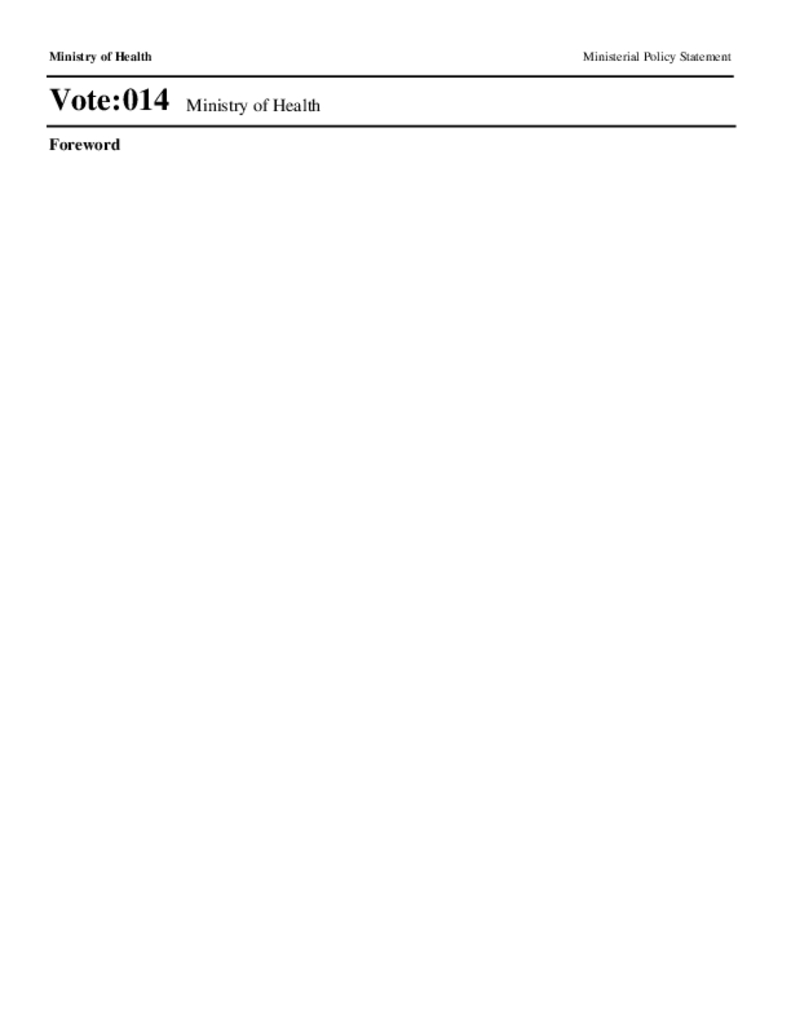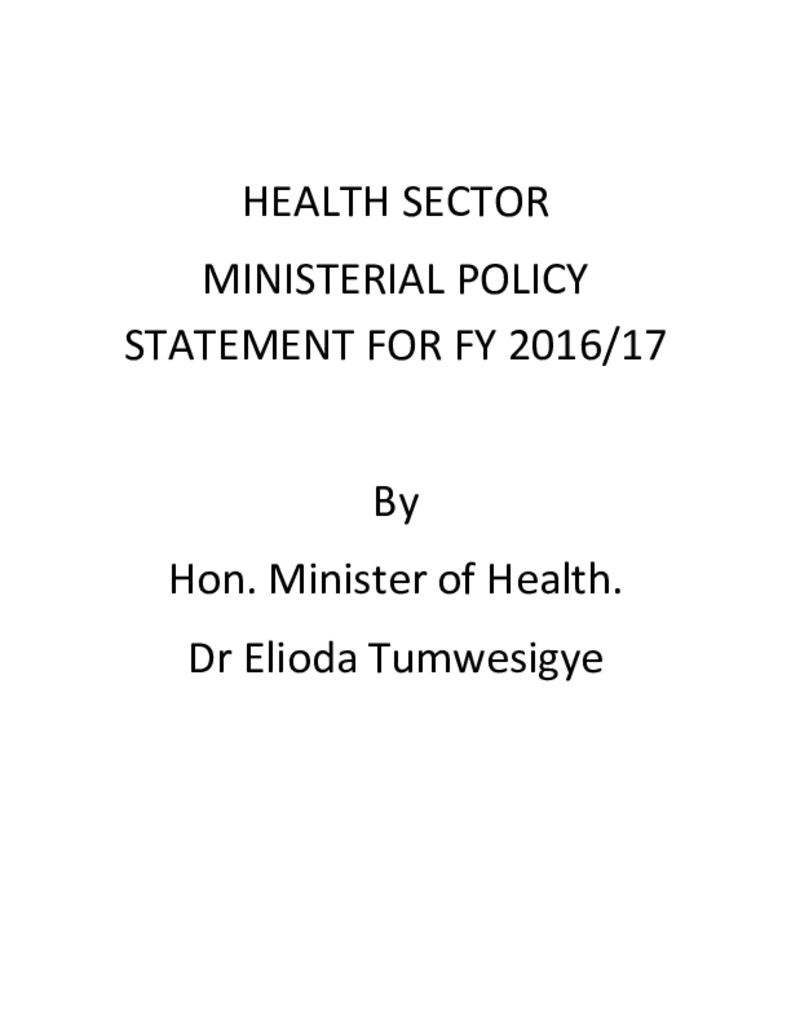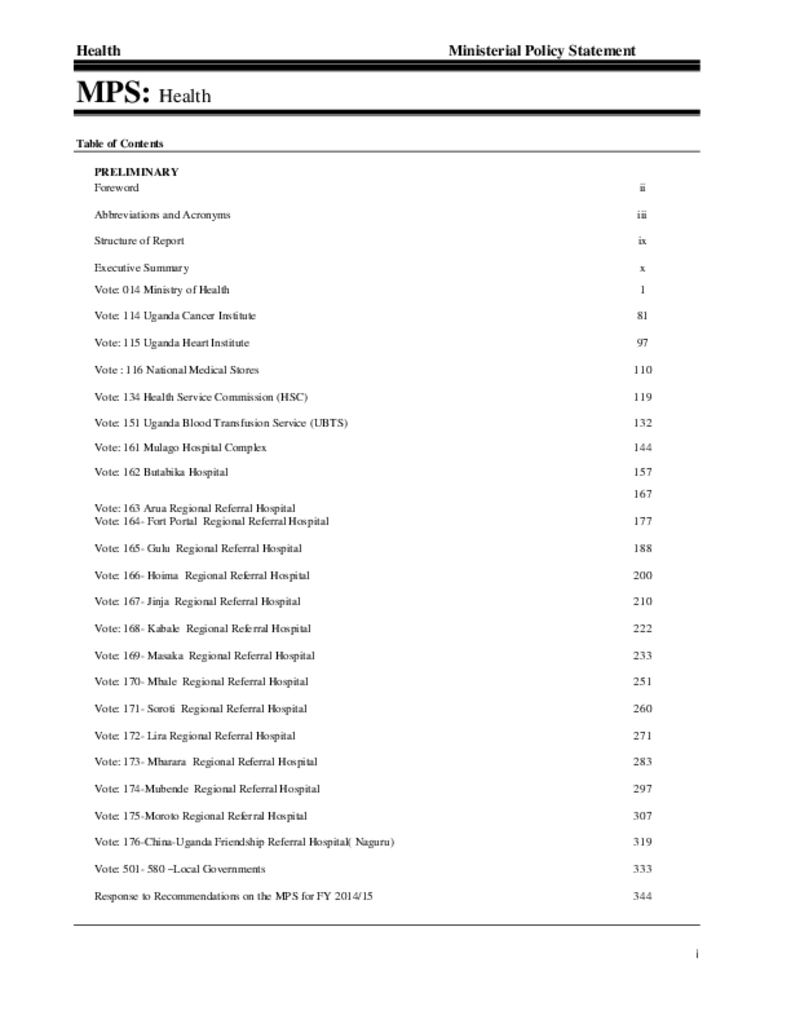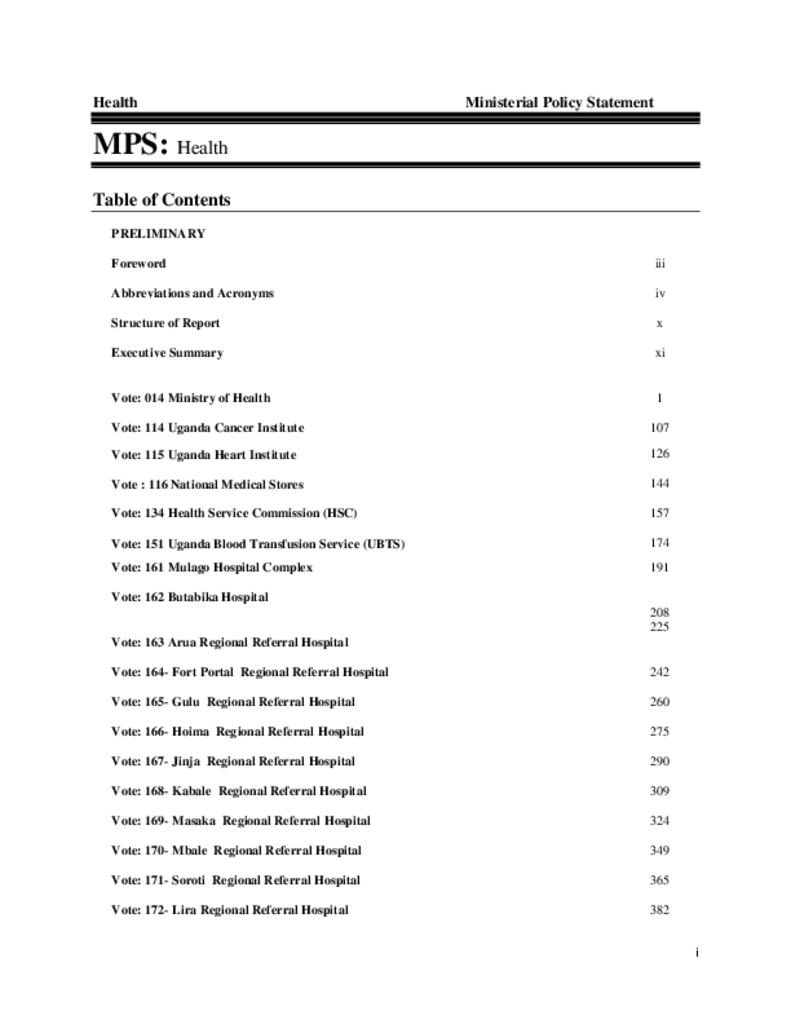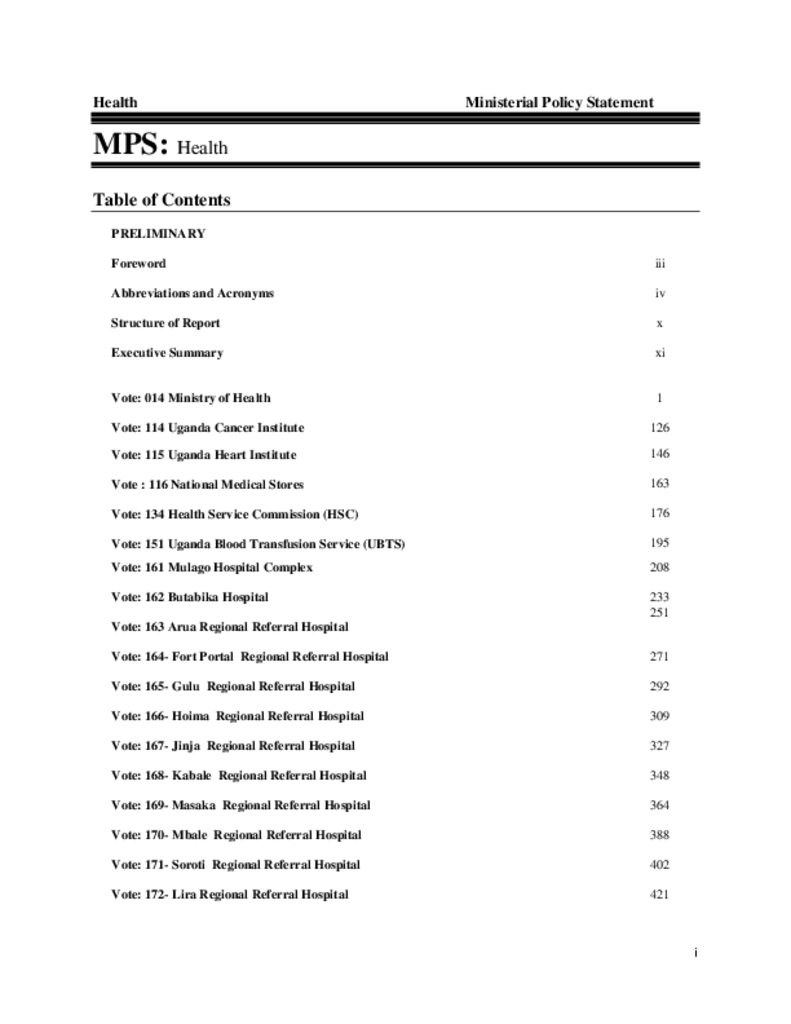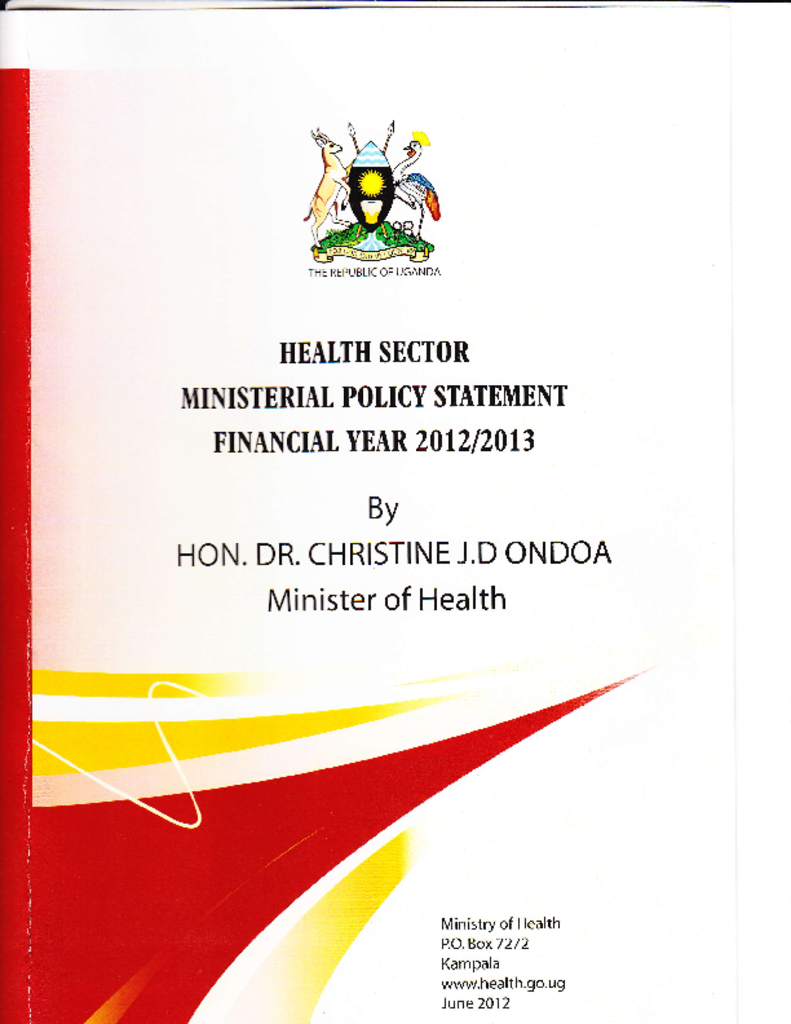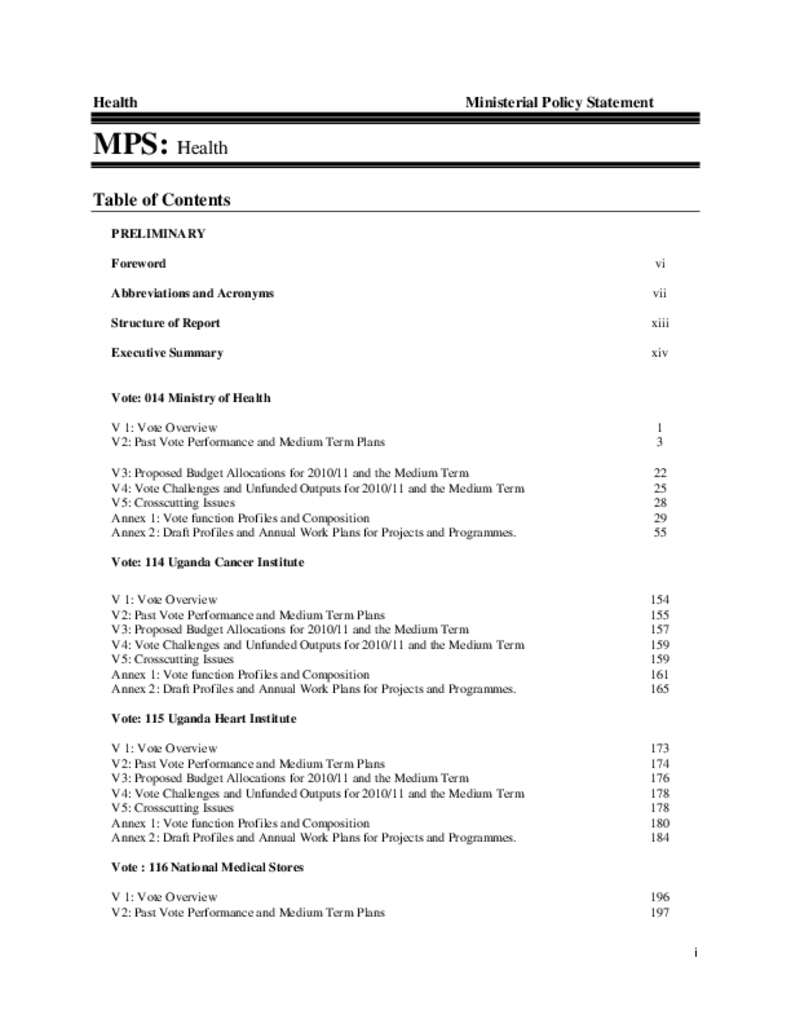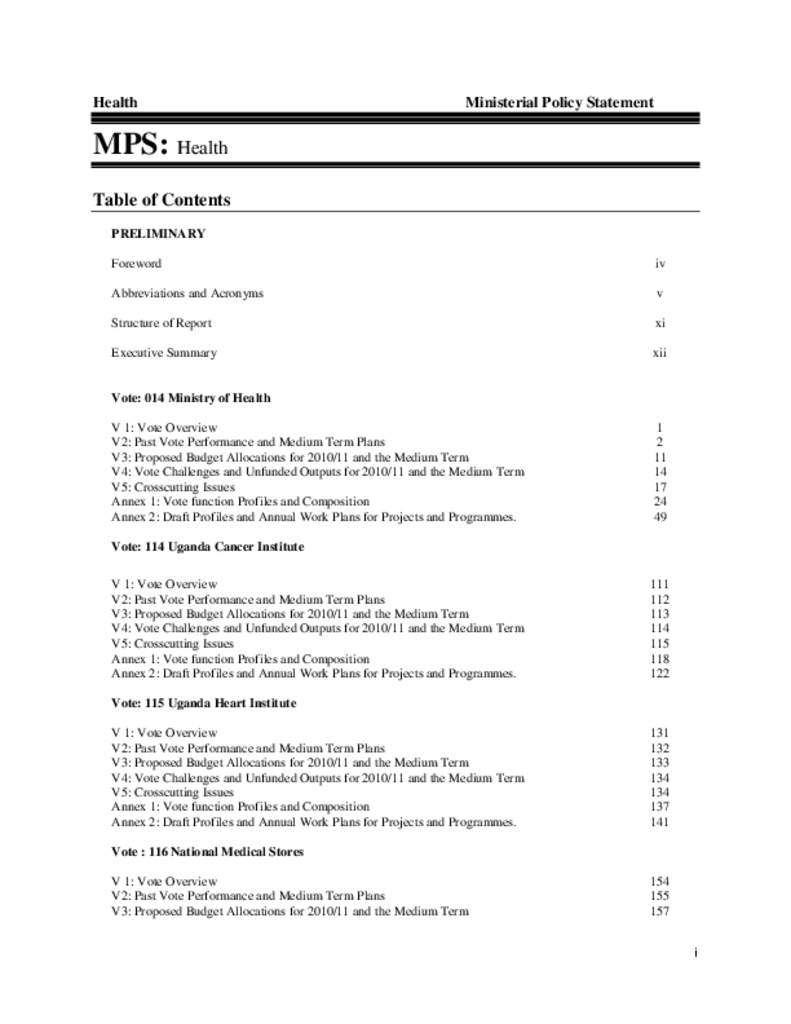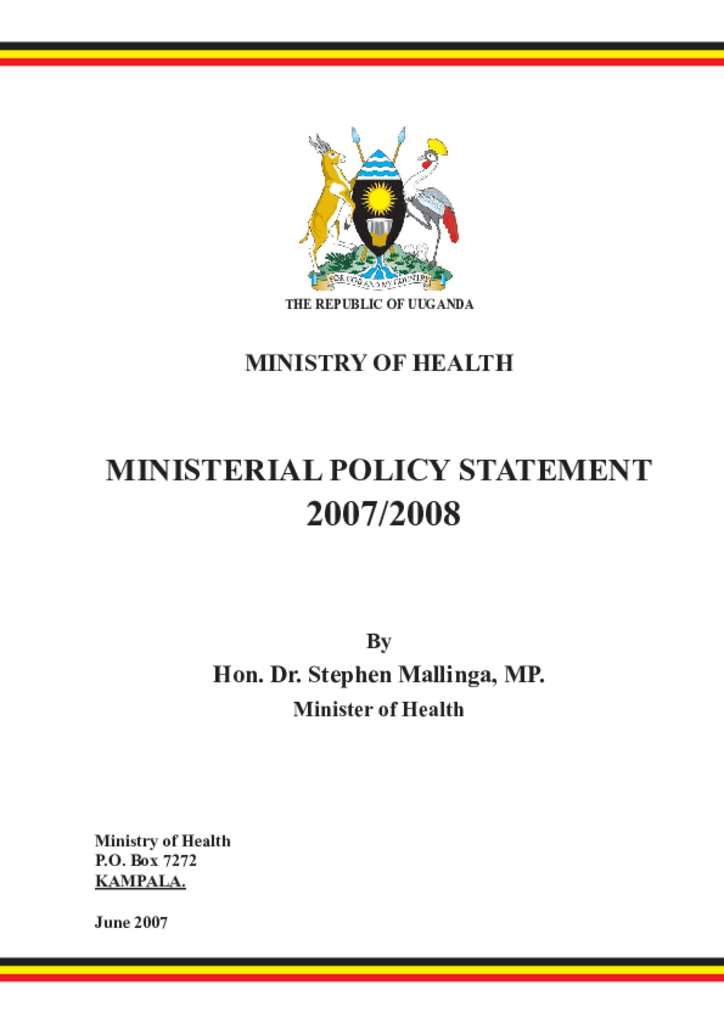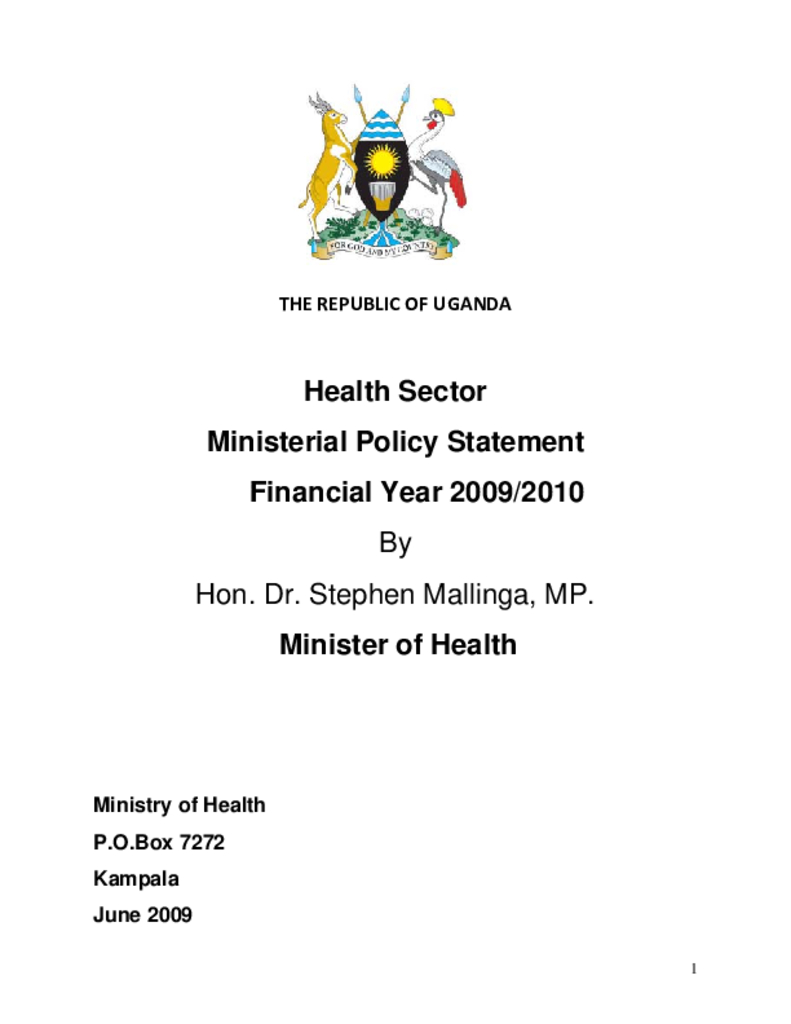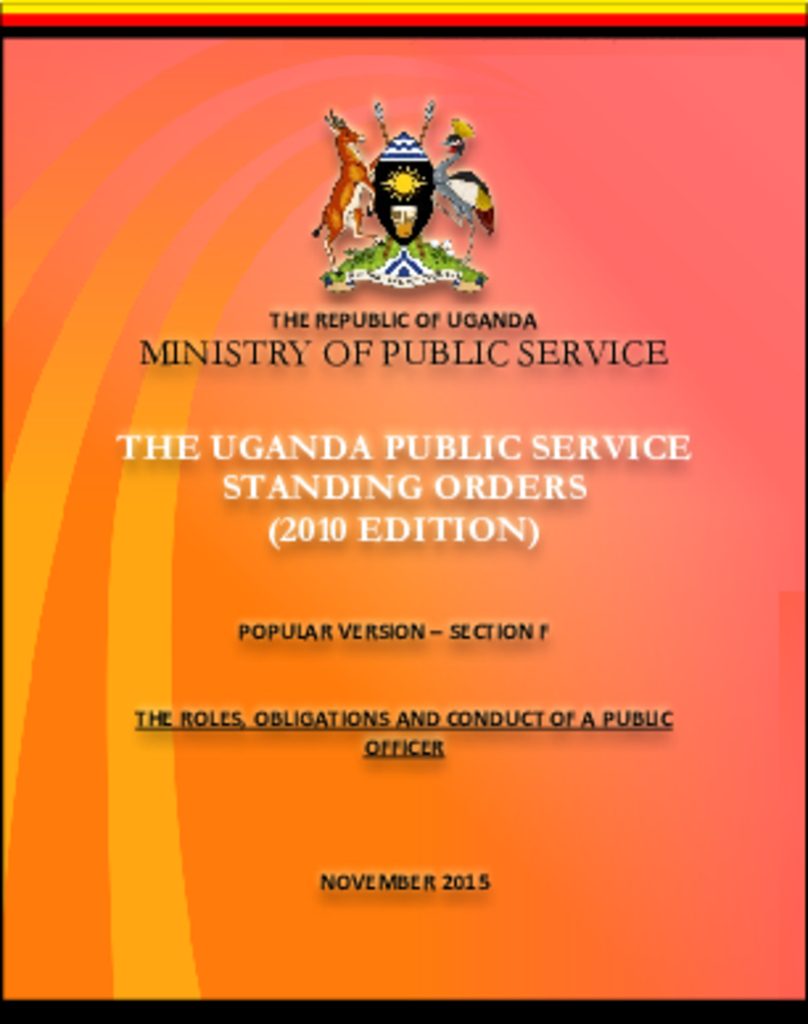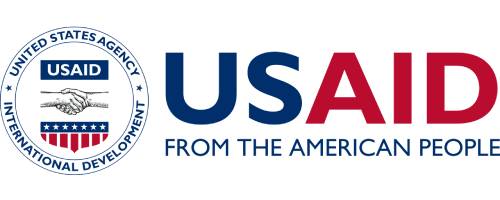Vote Mission Statement
To provide the highest possible level of health services to all people in Uganda through delivery of promotive,
preventive, curative, palliative and rehabilitative health services at all levels.
(ii) Strategic Objective
a. To provide inclusive and quality health care services through policy formulation and providing strategic direction, planning and
coordination of health care provision in Uganda.
b. To address the key determinants of health through strengthening of inter-sectoral collaborations and partnerships.
c. To enhance the health sector competitiveness in the region and globally.
The Government of Uganda regards Health as a fundamental human right. Good health of citizens is an indispensable prerequisite for socio-economic stability and sustainable development of a country. The Ministry of Health recognizes that good health is not a product of the health sector alone, but a product of effective policy implementation across all sectors of Government. The Goal of the sector focuses on improving population health and well-being, reducing health inequalities, and ensuring a citizen-centered health system that is universal, equitable, sustainable and of a high quality. The achievements of the Ministry of Health during the FY 2015/16 were in accordance with the sector priorities as guided by the Health Sector Development Plan (HSDP) and within the realm of the National Development Plan II. In order to achieve this, the Ministry focuses on implementation of National Health Policy II (NHPII) whose priority areas include: Strengthening Health System in line with decentralisation, reconceptualising and organising supervision and monitoring of health systems at all levels, establishing a functional integration within the public and private sector, addressing the human resource gaps and related service delivery challenges.
The Govemment of Uganda continues to facilitate the attainment of a good standard of health for all the people in Uganda. The goal of the Health Sector is therefore to reduce morbidity and mortality as a contribution to poverty reduction as well as economic and social development of the people of Uganda. The achievements of the Ministry during the FY 20l4ll5 were in accordance with the sector priorities as guided by the Health Sector Strategic and Investment Plan (HSSIP) and within the realm of the National Development Plan.
The Government of Uganda is committed to facilitating the attainment of a good standard of health for all the people in Uganda. The goal of the Health Sector is therefore to reduce morbidity and mortality as a contribution to poverty reduction as well as economic and social development of the people of Uganda. The achievements within the FY 2013/14 were in accordance with the priorities of the Sector as guided by the Health Sector Strategic and Investment Plan (HSSIP) within the realm of the National Development Plan.
The structure of the MPS for FY 2014/15 is in accordance with the Sector Vote Functions that serve to link financial resources and other inputs to sector outputs and outcomes. The limited resource envelope to the Sector notwithstanding, particular attention will be paid to areas that harness efficiency gains that will lead to improved service delivery.
The Government of Uganda is committed to facilitating the attainment of a good standard of health for all the people in Uganda. The goal of the Health Sector is therefore to reduce morbidity and mortality as a contribution to poverty reduction as well as economic and social development of the people in Uganda. The achievements within the FY 2012/13 were in accordance with the priorities of the Sector as guided by the Health Sector Strategic and Investment Plan (HSSIP) within the realm of the National Development Plan. The Health Sector is implementing the HSSIP and the National Health Policy II which will guide the implementation of the planned activities for FY 2013/14.
This Ministerial Policy Statement (MPS) was prepared within the context of the Sector Wide Approach (SWAP). In a participatory framework, the Top Management and the Health Sector Budget Working Group together with respective vote holders compiled the sector performance for FY 2011/12 and identified the sector priorities for FY 2012/13 and the medium term. The structure of the MPS for FY 2012/13 is in accordance with the Sector Vote Functions that serve to link financial resources and other inputs to Sector outputs and outcomes. These are outlined in the results chain matrix in which the sector interventions were aligned to the National Development Plan (NDP) strategic objectives.
This Ministerial Policy Statement (MPS) was prepared within the context of the Sector Wide Approach (SWAP). In a participatory framework, the Health Sector Budget Working Group worked with respective votes to compile the sector performance for FY 2010/11 and identified the Sector priorities for FY 2011/12 and the medium term. The structure of the MPS for FY 2011/12 is, therefore, in accordance with the Sector Vote Functions that serve to link financial resources and other inputs to Sector outputs and outcomes. These are outlined in the results chain matrix in which the sector interventions were aligned to the National Development Plan (NDP) strategic objectives. Priorities and resource allocations are guided by positions agreed in the Joint Review Mission of November 2010
This Ministerial Policy Statement (MPS), as in the case before, was prepared within the context of the Sector Wide Approach (SWAP). In a participatory framework, the Health Sector Budget Working Group worked with respective votes to compile the sector performance for FY 2009/10 and identified the Sector priorities for FY 2010/11 and the medium term. The structure of the MPS for FY 2010/11 is, therefore, in accordance with the Sector Vote Functions that serve to link financial resources and other inputs to Sector outputs and policy objectives.
Mr. Speaker Sir and Honorable Members of Parliament, the overall goal of the health sector is the attainment of a good standard of health of the people in Uganda, in order to promote a healthy and productive life. The specific objective of the sector is to reduce morbidity and mortality from the major causes of ill-health and the variations therein, as a contribution to poverty eradication, economic and social development of the people. 2. The financial year 2007/08 makes the third year in the implementation of the second Health Sector Strategic Plan II (HSSP 2005/06 – 2009/2010).
The Health Sector Ministerial Policy Statement (MPS) was prepared within the context of the Sector Wide Approach (SWAP). The Sector Working Group in consultation with respective Votes, programmes and projects identified the Sector outputs and planned activities under the Vote Functions for FY 2009/10 and the medium term. The structure of MPS for FY 2009/10 is therefore in accordance with the Sector Vote Functions that serve to link financial resources and other inputs to Sector outputs and policy objectives in a concise and coherent manner.
This edition of the Standing Orders shall be referred to as the 2010 Edition. It is a single consolidated document which deals generally with the management of the Public Service and issues concerning the terms and conditions of Service.
The Standing Orders is divided into alphabetical sections marked with capital letters representing the major sections, from A-Q. There is also a list of contents at the beginning of each alphabetical section, which are sub-divided into sub-sections marked in small letters, thus A-a. Paragraphs in sub-sections are referred to as, for example, A-a
Uganda brings a long history of multi-sectoral responses to disease outbreaks and public health threats. With the formalization of the One Health Platform, Uganda is now poised to turn this history into a strategic, forward-looking approach to integrated, multi-sectoral preparedness and response. The One Health Strategic Plan will serve as the roadmap to make this approach a reality.
STRATEGIC PLANNING PROCESS
With support from the USAID-funded Preparedness and Response (P&R) Project, the One Health Platform engaged stakeholders from the Ministry of Health (MOH), Ministry of Agriculture, Animal Industry and Fisheries (MAAIF), Ministry of Water and Environment (MWE), and the Uganda Wildlife Authority of the Ministry of Tourism, Wildlife and Antiquities (MoTWA) in a series of strategic planning workshops and meetings. This document captures the priorities, outputs, and commitments from those engagements.
